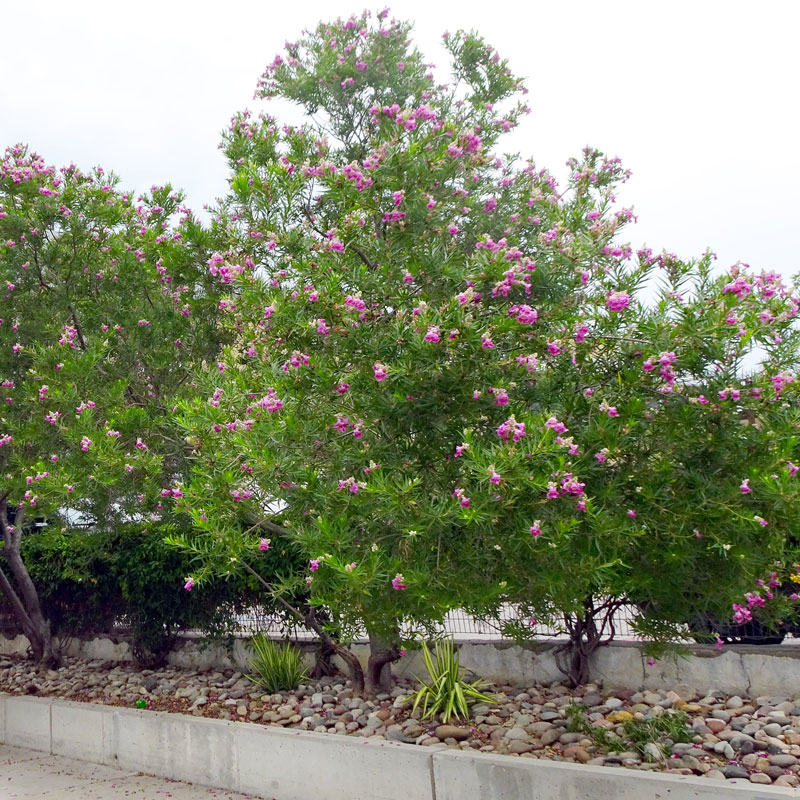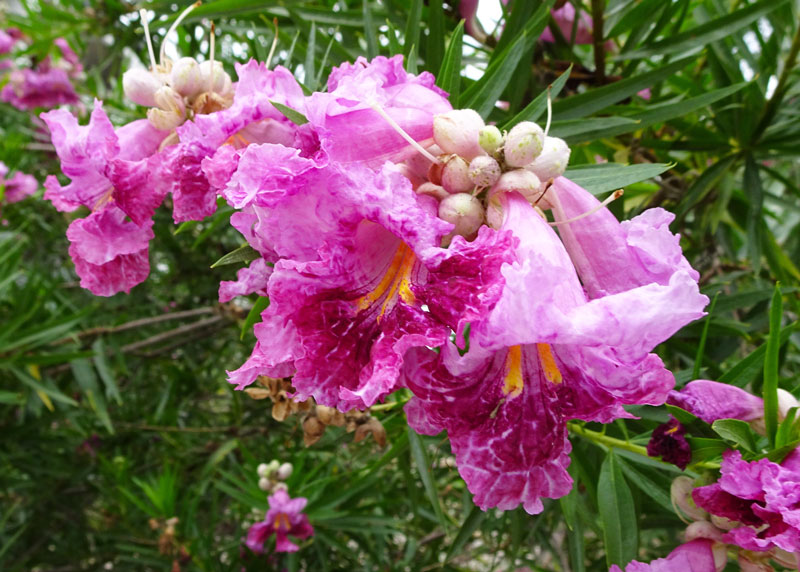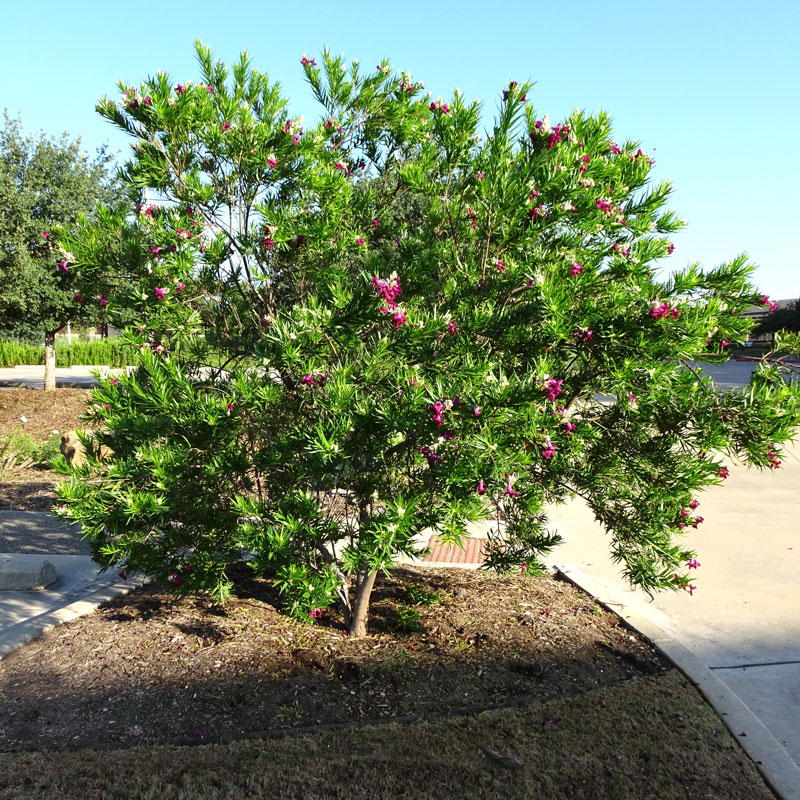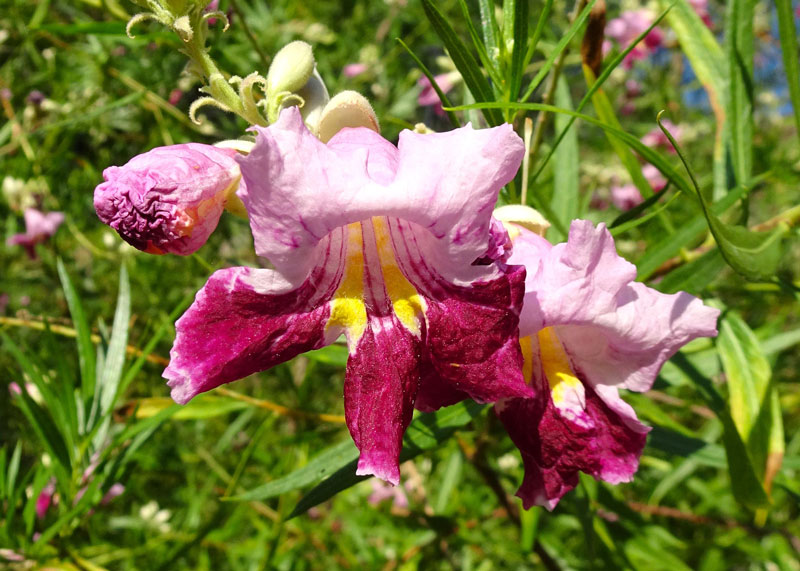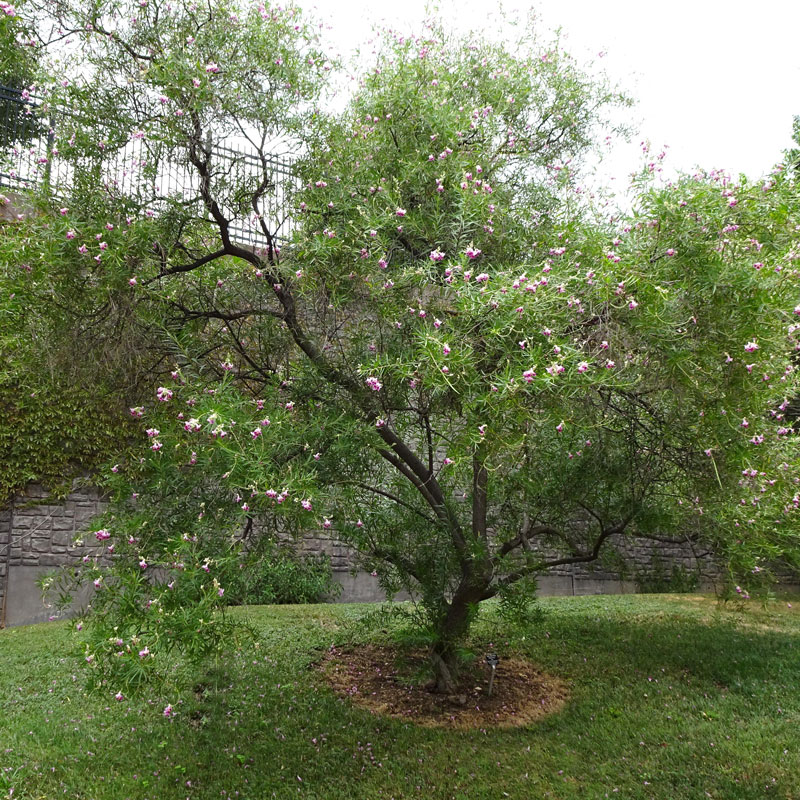Desert Willow – by Steve Huddleston
Desert willow is not a willow at all – it merely resembles one. It is native from West Texas to Southern California and Northern Mexico where it grows along dry stream beds and where its roots can find moisture. Although a drought-tolerant tree, it certainly appreciates water and grows faster when it receives an ample supply.
First of all, Desert willow is a deciduous tree that usually grows 15-25 feet tall and 15-20 feet wide, although it can grow as tall as 30 feet. It has an open, twiggy structure, a slightly weeping form, and a delicate canopy that casts only light shade, thus making it possible to grow grass or other plants beneath it. The trunk can be straight or crooked and exhibits a smooth, gray bark. The tree has medium-green, willow-like leaves that turn a soft yellow in the fall and then drop. The wispy form of desert willow sets off the gorgeous display of showy, ruffled flowers that bloom continuously from May through September, resemble Cattleya orchids and attract hummingbirds. Blossoms can be white, pink or burgundy. Once the flowers quit blooming, pencil-thin seed pods 4-12 inches long appear and persist through the winter.

Several cultivars of desert willow exist. ‘Art’s Seedless’ produces sterile flowers and therefore no seed pods. ‘Bubba’ sports dark burgundy flowers. ‘Desert Diva’ has emerald-green leaves and dark, purple-burgundy flowers.
Desert willow prefers well-drained soil in full sun. It tolerates heat, cold, drought, and wind. After a two-year establishment period, this tree can live on rainfall alone. It has no insect or disease problems and is resistant to cotton root rot. Desert willow can be planted from a container anytime, although fall is the best time of the year because the tree establishes more easily in the cooler weather of fall. You may want to make your selection during spring or summer, however, while the tree is blooming so that you know exactly what color the flowers are.
Left to itself, desert willow can form a multi-trunked, sprawling tree. To train it into more of an upright tree form, select a strong central trunk and remove the lower branches. Thereafter, you may occasionally have to prune it to shape it. You may also have to remove a few suckers which arise from the base of the tree from time to time.
Here’s what you’ll want to know….
• The Latin name is Chilopsis linearis. Desert willow belongs to the Bignoniaceae family, which includes trumpet vine, crossvine, and catalpa.
• Hardy in Zones 7-9.
• Desert willow makes an excellent tree for small lots, patios, courtyards, or desert gardens.
• Combines well with other native Texas plants such as agarita, Turk’s cap, Mexican feather grass and Salvia greggii.

